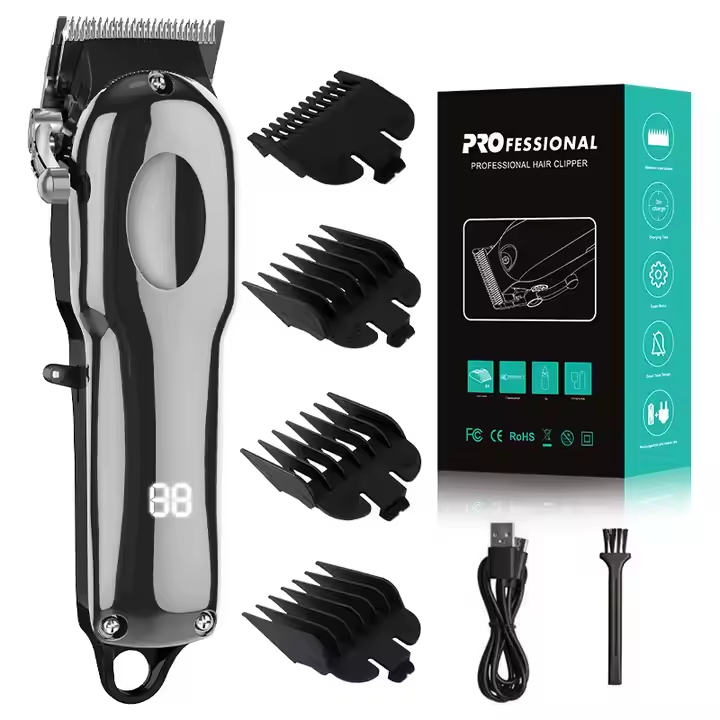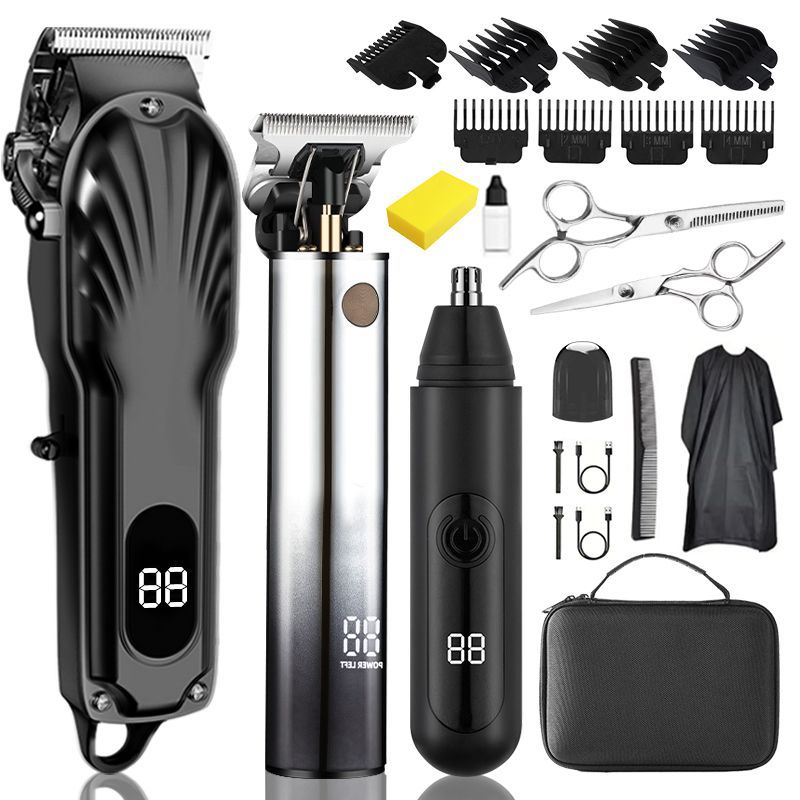
It’s a lazy Saturday afternoon in September 2025. The clock shows 3 PM. You’re ready to give yourself a neat haircut at home. You grab your hair clippers, plug them in, and start buzzing. But then—ugh—the blades snag, leaving uneven patches. Annoying, huh? Dirty clippers can turn a quick trim into a headache, causing itchy skin or choppy cuts. Plus, they wear out faster if you skip the care. This guide is for you—whether you’re a home barber, a rushed parent, or just someone who likes saving bucks by dodging the salon. We’ll walk you through cleaning and maintaining your hair clippers the smart way, pulling from real-life stories and handy tips. Let’s keep those clippers running strong for years.
Your hair clippers aren’t just gadgets. They’re worth keeping up. Use them a few times a week, and that’s 50 to 100 cuts in a year. Ignore the upkeep, and you’ll get clogged blades yanking hair, red bumps popping up, or rust sneaking in. I’ve seen it myself—my buddy skipped cleaning his clippers after a couple uses, and his next trim was a patchy disaster with a scratchy scalp. Regular care keeps them cutting clean and lasts longer—think 3 to 5 years instead of fading out in one.
The stakes rise if you’re using them on kids or paying clients. Grimy blades can spread germs, and that’s a no-go. Plus, with clippers like those with a 10W motor and tough steel heads—pretty common in solid models—good maintenance keeps that power going. It’s not only about looks. It’s about saving cash and staying healthy.
I mean, who wants to toss a good tool just ‘cause they got lazy? Not me!
Cleaning doesn’t have to be a pain. Do it after every 2 or 3 uses, and you’ll skip the big troubles. Here’s how to tackle it, step by easy step.
Start by unplugging those clippers. Safety’s key. No juice means no shocks. Lay them on a towel to catch any stray hair. This gets you set for a smooth job.
Brush off loose hair and dirt from the outside. Grab a small brush—like the one that comes with most clippers—or an old toothbrush. Hit the nooks and crannies. It’s quick, but it stops gunk from piling up.
Gently take the clipper apart. Pull off the blade and any guards. Shake out trapped hair inside. Go slow—rushing can twist parts. A pal of mine once forced his open and bent the blade. Take your time here.
Pick up a blade wash solution and a brush. Scrub the blades to zap bacteria and lift grime. If they’re super dirty, soak the parts in the solution for 5 to 10 minutes. White vinegar works too—cheap and natural, with its acid killing mold and germs. But store-bought washes stick around longer and pack a punch. Rinse if you need to, but keep the motor housing dry.
Wipe everything with a clean rag or let it air dry. Wetness is trouble—rust creeps in fast. Make sure it’s totally dry before you move on. I learned this the hard way when a damp blade rusted overnight. Lesson learned!
Cleaning’s only part of it. Oiling keeps the blades sharp and the motor cool. Do it every 2 uses—it’s quick and cuts down wear. Here’s the scoop.
Start with clean, dry blades. Oil won’t grab right if there’s gunk or water. Follow the cleaning steps above. It’s a fast check to make sure you’re ready.
Tilt the clipper down, flat side away from you. Turn it on. Drop 2 to 3 drops of clipper oil across the blade top. Let it spread as it runs for 10 seconds. This coats it evenly and stops heat buildup. Use a good oil—cheap stuff can clog things up. I once tried kitchen oil by accident; it was a sticky mess, trust me.
A few tricks can stretch your clippers’ life even further. Check these out.
One time, I forgot to tighten the blade after oiling. The next cut looked like a zigzag nightmare. Always double-check!
It’s kinda funny how a little slip-up can throw everything off, huh?
Taking care pays off big. Look at an Indian chain of barbershops using clippers with 10W motors and sturdy heads. They cleaned and oiled after every few clients, dropping replacement costs by 30% in two years. Customers got smoother trims too, bringing them back more. Or take a dad I know—three kids, weekly haircuts at home. He sticks to this routine, and his clippers, bought five years back, still hum like new.
Numbers back it up. Pros in the biz say well-kept clippers last 50% longer—up to 5 years versus 3 with neglect. That’s hundreds saved, plus less trash in landfills. It’s not just chatter; it’s real in busy shops and quiet homes alike.
I bet my old clippers would’ve lasted if I’d known this stuff earlier. Live and learn!

For solid hair clippers that don’t break the bank, SUOKE Electric’s your pick. Based in Yiwu, China, this team focuses on care tools, making clippers with 10W motors, steel or ceramic blades, and 3-hour battery life. Their designs fit your grip just right, with sharp, tough edges for home or pro jobs. Certified with CE and ROHS, they ship worldwide, with good backup like free returns for flaws. From family sets to custom orders for salons, SUOKE’s flexible choices stand out. Big chains in India and sellers overseas love their quality, keeping trims neat without a hefty price.
They’ve got tales from users too, like a shop cutting costs with those durable heads. Makes you think they know their stuff.
Looking after your hair clippers isn’t some big puzzle, but it changes the game. Clean them after a few uses, oil them now and then, and store them right. You’ll get cleaner cuts, less skin hassle, and clippers that last years not months. Whether you’re trimming at home or running a shop, this routine saves cash and stress. Try it out—you’ll feel the difference.
Clean after 2 or 3 uses, and oil every couple times. This keeps blades sharp and stops rust, stretching their life to 5 years.
Use a blade wash solution and brush, then soak parts for 5-10 minutes if needed. Dry fully after. Vinegar’s cheap, but washes hold up better.
Nah—oil every 2 uses to cut friction and heat. Skip it, and blades go dull fast, maybe in half the time.
If they pull hair or leave patches after cleaning and oiling, it’s time. Swap every 3-6 months, depending on how much you use ‘em.
Leaving ‘em wet—rust hits quick. Always dry ‘em good before storing.